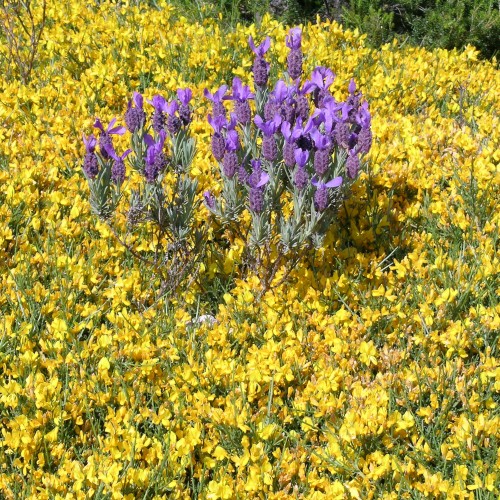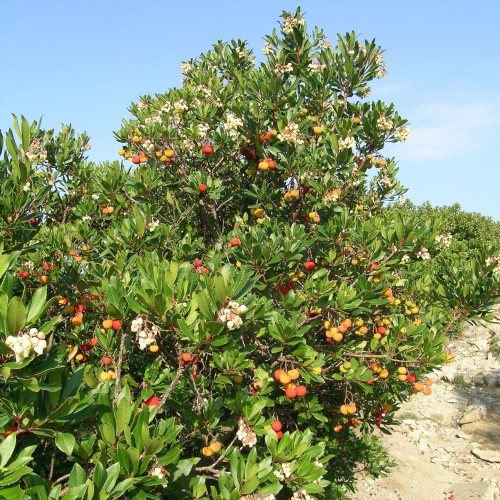
Mediterranean maquis
Maquis, originally a Corsican word referring to the typical and impenetrable undergrowth of that large island situated to the west of Elba, is a form of vegetation typical of Mediterranean coasts. Maquis shrublands are usually collections of sclerophyllous shrubs, very often the result of fires, human activities or both in wooded areas. Normally, and in these cases we are referring to 'secondary maquis', they are ancient old holm oak woods adapted by humans for agriculture and sheep herding. When the human activity ceases, even if only a few specimens of Quercus ilex remain, there is a slow yet progressive return to the original state.
'Primary maquis' refers to a few areas with specific soil and dryness characteristics where the current situation, featuring small, xerophytic shrubs, is very similar to the original one. In any case, it is difficult to define and establish the composition of maquis shrublands. Their type can vary depending on the flora present, roughly identified based on the most numerous species - a situation which may be due to a certain level of human activity - or by a given terrain feature, or by certain climate conditions.
Changing just one of these variables can result in trend reversals and development of maquis shrublands with different characteristics. In addition to the holm oak, the trees most typically found in maquis shrublands include cork oaks, among the tallest species, and, on the coast, Aleppo pines and junipers. Small trees and shrubs include arbutus, viburnum and tree heather as well as lentisk, phillyrea, buckthorn and myrtle. Other plants typical of this environment are cytisus, gorse, common broom, rockrose and rosemary and lavender, species that adorn the Island's slopes with yellow, blue, pink, white and violet.
Spring is the most important time when, awoken by the March and April rains and then warmed by the sunshine, these shrubs - even the smallest, most crooked ones growing among the cliffs - get busy producing spectacular blooms, delighting the eye with a vortex of scents and colours irresistible to bees, butterflies and other pollinating insects.
(Antonello Marchese, translation from Italian)




